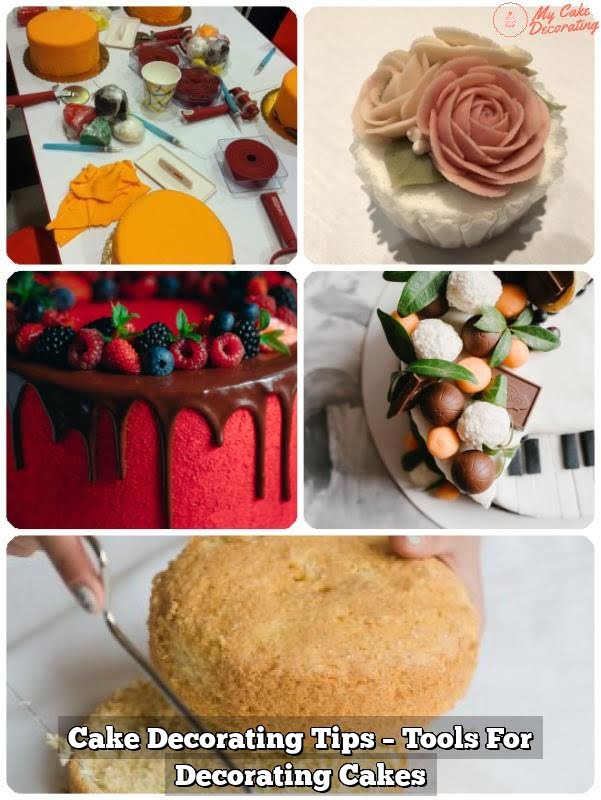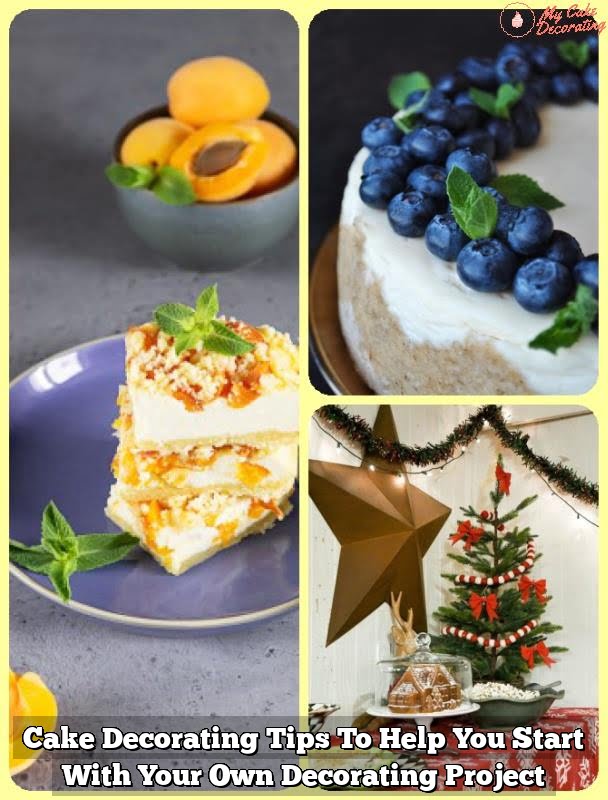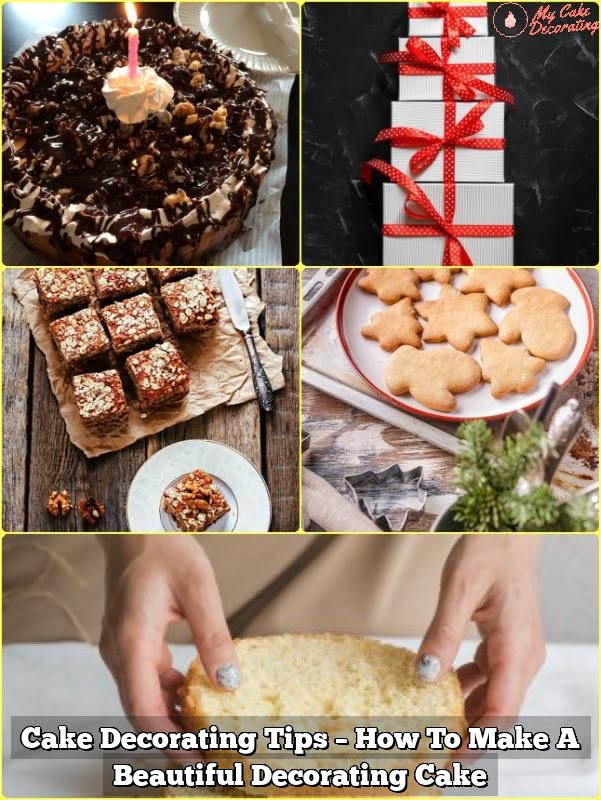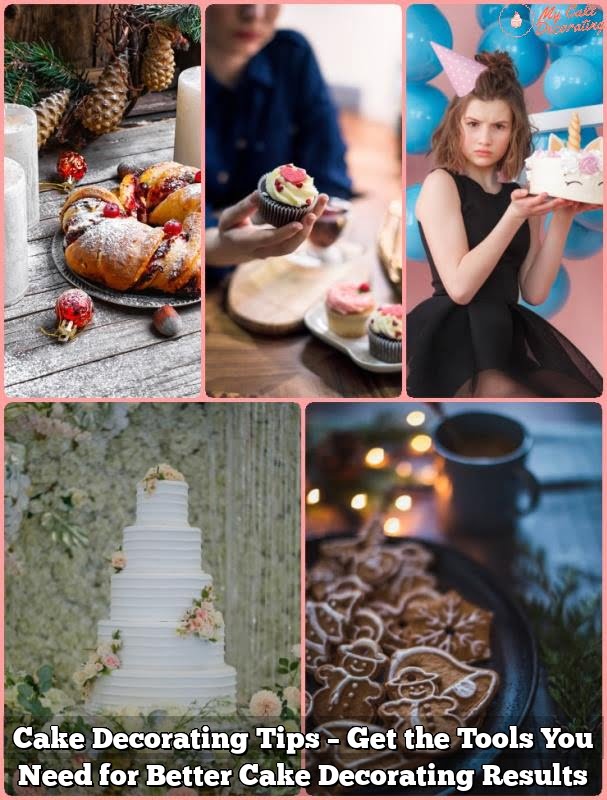Cake decorating is an art form that allows individuals to express their creativity and add a personal touch to cakes for various occasions. Whether you are a professional baker or someone who simply enjoys baking as a hobby, using tips for cake decorating can take your creations to the next level. These small, metal nozzles are essential tools that can help you achieve stunning designs and textures on your cakes.
The right tip can make all the difference in the outcome of your cake decoration. With various shapes and sizes available, cake decorating tips offer endless possibilities for creating intricate designs, piping beautiful borders, and even sculpting three-dimensional shapes. From simple rosettes to intricate lace-like patterns, these tips give you the ability to turn a plain cake into a work of art.
In this article, we will explore the importance of using tips for cake decorating and provide you with a comprehensive guide on how to use them effectively. We will discuss the different types of tips available and explain when and how to use each one. Additionally, we will cover essential tools that complement the use of cake decorating tips, as well as provide step-by-step instructions on attaching them to piping bags.
Whether you are new to cake decorating or looking to enhance your existing skills, this article will equip you with the knowledge and techniques needed for successful cake decoration. So grab your piping bags and let’s dive into the exciting world of using tips for cake decorating.
Understanding Different Types of Tips
Round Tips
One of the most common types of cake decorating tips is the round tip. These tips are characterized by their circular opening and are perfect for creating smooth lines, dots, and writing on cakes. Smaller round tips, such as a size 1 or 2, are ideal for intricate details and delicate designs, while larger round tips, like a size 5 or 6, are better suited for filling in large areas with buttercream or creating bold outlines.
Star Tips
Star tips are another popular type of cake decorating tip that can add texture and dimension to your cakes. They feature a star-shaped opening and can be used to create beautiful rosettes, shells, stars, and other decorative shapes.
Star tips come in various sizes, each producing a different effect. A smaller star tip, like a size 16 or 18, will create fine details, while a larger star tip such as a size 22 or 24 will give you more substantial patterns.
Petal Tips
Petal tips are essential for creating stunning floral designs on cakes. These tips have a narrow teardrop shape with one rounded end and one pointed end. They allow you to pipe individual petals onto flowers such as roses and daisies. Petal tips come in different sizes ranging from small (size 59) to large (size 122), giving you the flexibility to create flowers of various sizes.
Leaf Tips
If you want to add realistic-looking leaves to your cake designs, leaf tips are a must-have tool. These tips have an elongated triangle shape that mimics the appearance of foliage. Leaf tips range in size from small (size 352) to large (size 366) and can be used to piped leaves individually or in clusters.
By familiarizing yourself with these different types of cake decorating tips, you can expand your repertoire and create an array of designs on your cakes. Experimenting with various tip sizes and techniques will allow you to unleash your creativity and bring your cake decorating skills to the next level. Now that we have covered the different types of tips, let’s move on to the must-have tools for using these tips effectively.
Must-Have Tools for Using Cake Decorating Tips
Using cake decorating tips requires a few essential tools in order to achieve professional-looking results. These tools not only make the process easier but also ensure that you have everything you need to bring your creative vision to life. Here are some must-have tools for using cake decorating tips:
Piping Bags
Piping bags are an indispensable tool when it comes to using cake decorating tips. They come in different materials such as disposable plastic or reusable fabric, each with its own benefits. Disposable plastic piping bags are convenient and hygienic, while reusable fabric ones are more environmentally friendly and provide better grip.
When choosing a piping bag, consider its size depending on the amount of frosting or batter you will be working with. It’s also important to choose a bag that is sturdy enough to withstand pressure but flexible enough for easy maneuvering.
Couplers
Couplers are small devices that allow you to easily change the tips on your piping bag without having to empty it completely. They consist of a base and a ring that securely holds the tip in place. Couplers are especially useful when you want to switch between different types or sizes of tips during the decoration process.
To use a coupler, simply insert it into the end of your piping bag and trim off any excess if necessary. Then screw on the ring, making sure it’s tight enough to hold the tip securely but not too tight that it damages the bag.
Decorating Tips Organizer
Keeping your cake decorating tips organized is important for easy access and preventing them from getting lost or damaged. A decorating tips organizer is designed specifically for storing and organizing tips, usually in individual compartments that can accommodate different shapes and sizes.
Look for organizers made of sturdy materials such as plastic or metal, as they provide better protection for your tips against bending or breaking. Some organizers even come with removable trays, making it easier to clean and maintain.
Other Tools
In addition to piping bags, couplers, and a decorating tips organizer, there are a few other tools that can make your cake decorating experience more enjoyable and efficient. These include:
- Offset spatula: Used for smoothing frosting on cakes or creating smooth edges.
- Cake turntable: Allows you to easily rotate the cake for even frosting and decorating.
- Squeeze bottles: Ideal for storing and dispensing different colored frostings or fillings.
- Decorating brushes: Used for adding details or applying edible glazes.
By having these must-have tools in your cake decorating arsenal, you’ll be well-equipped to explore various techniques and unleash your creativity using cake decorating tips.
Prepping Your Cake
When it comes to cake decorating, prepping your cake properly is crucial for achieving successful results. Prepping involves a series of steps that ensure your cake is ready to be decorated and that the decorations adhere well to the surface. Here are some essential tips for prepping your cake before you start using cake decorating tips:
Leveling
Before you begin decorating, it’s important to level your cake layers. Uneven layers can make it difficult to create a smooth and professional-looking finish. To level your cake, use a long serrated knife or a cake leveler to trim the top of the cake until it’s even.
Torting
Torting refers to slicing each cake layer horizontally into thinner layers before adding filling or frosting between them. This step adds more flavor and moisture to the cake while also creating an impressive layered effect. Use a long serrated knife or a cake slicer tool to carefully cut through the center of each layer.
Crumb Coating
Crumb coating is an important step in preventing loose crumbs from interfering with the final decoration. It involves applying a thin layer of frosting or buttercream all over the outside of the cake, sealing in any loose crumbs. Use an offset spatula for smooth and even application.
Chilling
After crumb coating, it’s best to chill your cake in the refrigerator for about 30 minutes to allow the frosting or buttercream to set and firm up. This will make it easier for you to add additional layers of frosting and decorations without disturbing the crumb coat.
By following these prepping tips, you’ll create a solid foundation for your decorations and ensure that they adhere well to your cake surface. Taking time with these steps will result in a beautifully decorated cake that looks as good as it tastes.
Step-by-Step Guide on How to Attach Cake Decorating Tips to Piping Bags
One of the most important steps in using cake decorating tips is properly attaching them to piping bags. This step ensures that the tips are secure and allows for precise control when decorating cakes. Follow this step-by-step guide to learn how to attach cake decorating tips to piping bags:
- Gather your materials: You will need a piping bag, a coupler, and the desired cake decorating tip. A coupler is a two-part system that allows you to easily change tips without changing bags. It consists of a base and a ring.
- Prepare the piping bag: Trim the end of the piping bag if necessary, allowing enough space for the tip to fit through without any obstructions. Insert the base of the coupler into the trimmed end of the bag, pushing it as far up as possible.
- Attach the ring: Screw on the ring of the coupler onto the base that is already inserted in the bag. Tighten it securely, ensuring that it holds everything together firmly.
- Insert the cake decorating tip: Take your desired tip and slide it into place by inserting it into the opening at the end of the coupler. Push it gently but firmly until it is secure.
- Test for security: Gently tug on both ends of the piping bag to make sure that everything is securely fastened together – from the ring to the tip. If anything feels loose or wobbly, reinforce their connection before proceeding.
By following these simple steps, you can ensure that your cake decorating tips are properly attached to your piping bags, giving you better control over your designs and allowing you to create stunning decorations with ease.
Mastering Basic Techniques
When it comes to cake decorating, mastering the basic techniques is crucial for creating beautiful and professional-looking designs. Piping, rosettes, and borders are three essential skills that every cake decorator should learn. In this section, we will explore these techniques in detail and provide tips for perfecting them.
Piping is one of the most fundamental techniques in cake decorating. It involves using a piping bag fitted with a decorating tip to apply icing or frosting onto the cake in various shapes and designs. To start piping, fill your piping bag with the desired icing or frosting using a spatula or spoon. Twist the top of the bag to secure the contents and apply pressure along the length of the bag to control the flow of icing.
Rosettes are a popular decorative element that adds elegance and dimension to cakes. They can be created by using a star-shaped decorating tip attached to a piping bag. To create rosettes, hold the piping bag at a 90-degree angle above the cake surface and apply even pressure as you swirl in a circular motion from the center outward. Experiment with different nozzle sizes to achieve varying sizes and textures of rosettes.
Borders serve as a frame for your cake design and can add a polished finish to its overall appearance. There are countless border designs that can be achieved using different types of decorating tips. For simple borders, such as shell borders or zigzag borders, a round tip or star tip can be used depending on your desired design. Again, hold your piping bag at an angle above the cake surface and apply even pressure as you move along.
Remember that practice makes perfect when it comes to mastering these basic techniques. Start with simple designs before moving on to more complex ones, allowing yourself time to develop your skills. By consistently practicing these techniques, you will soon become proficient in piping, creating gorgeous rosettes, and adding borders that elevate your cake decorating to the next level.
Advanced Techniques
Once you have mastered the basic techniques of piping, rosettes, and borders with cake decorating tips, you can move on to more advanced techniques that allow you to create intricate and stunning designs on your cakes. These techniques require a steady hand and practice, but with time, you will be able to create professional-level decorations that will impress your friends and family.
One advanced technique is called basket weaving. This technique involves creating a lattice pattern on the sides of the cake using a small round tip. Start by piping vertical lines evenly spaced around the cake. Then, pipe horizontal lines over the vertical lines, alternating the spaces between them to create a woven effect. This technique can be used to create a beautiful basket design or even simulate the look of fabric on a cake.
Another advanced technique is called stringwork. This technique involves creating delicate strings or filigree designs on the surface of the cake using a very thin round tip. To create stringwork, start by piping a straight line vertically or horizontally on the surface of the cake. Then, use quick and steady hand movements to pipe thin strings that cross over or intersect with each other, creating intricate patterns. Stringwork requires patience and precision, but it can result in breathtakingly beautiful designs.
| Technique | Description |
|---|---|
| Basket Weaving | Create a lattice pattern on the sides of the cake using vertical and horizontal lines |
| Stringwork | Create delicate strings or filigree designs on the surface of the cake using thin round tips |
Remember that these advanced techniques require practice and patience. It is important to start with simpler designs and gradually work your way up to more intricate ones. Don’t be discouraged if your first attempts are not perfect – with time and dedication, you will become more skilled at creating stunning designs with cake decorating tips. So, unleash your creativity and have fun experimenting with these advanced techniques.
Troubleshooting Common Issues when Using Cake Decorating Tips
Using cake decorating tips can be a fun and creative way to enhance the appearance of your cakes. However, it’s not uncommon to encounter some challenges along the way. In this section, we will address some common issues that may arise when using cake decorating tips and provide solutions to help troubleshoot these problems.
One common issue that many people face is clogged or blocked tips. This can happen when the icing or frosting being used is too thick, causing it to get stuck in the tip. To prevent this, it’s important to ensure that your icing or frosting has the right consistency. You can achieve this by adding small amounts of liquid, such as milk or water, until you reach a smooth and easily pipeable consistency.
Another problem that you might encounter is inconsistent pressure while piping. This can result in uneven lines or shapes on your cake. To solve this issue, practice maintaining a steady and even pressure on the piping bag as you pipe. It’s also helpful to hold the bag at a 45-degree angle for more control.
Furthermore, if your designs are not coming out as expected or are smudging easily, it could be due to warm hands melting the icing. A simple solution for this is to chill your hands with cold water before handling the piping bag. Additionally, you can try using gloves or wrapping a cloth around the bottom part of the bag where you hold it to prevent direct contact between your hands and the icing.
| Common Issue | Solution |
|---|---|
| Clogged or blocked tips | Ensure proper consistency of icing/frosting |
| Inconsistent pressure while piping | Practice maintaining steady and even pressure, hold bag at a 45-degree angle |
| Smudging designs due to warm hands | Chill hands with cold water before handling the piping bag or use gloves/cloth wrapping |
By being aware of these common issues and their solutions, you can troubleshoot and overcome any obstacles that may arise while using cake decorating tips. With practice and patience, you’ll soon be able to create beautiful and professional-looking designs on your cakes.
Cleaning and Storing Your Cake Decorating Tips
To ensure the longevity of your cake decorating tips, proper cleaning and storage techniques are essential. By taking care of your tips after each use, you can extend their lifespan and continue creating beautiful designs on your cakes for years to come.
The first step in cleaning your cake decorating tips is to remove any excess icing or frosting. Use a spatula or a small brush to gently scrape off any leftover residue. Then, rinse the tips under warm water to remove any remaining traces of icing.
Next, it’s important to wash the tips with mild dish soap and warm water. This will help remove any oils or grease that may have accumulated during use. Use a small brush or pipe cleaner to clean the inside of each tip thoroughly, ensuring there are no clogs or blockages.
Once you have thoroughly cleaned your cake decorating tips, it’s time to dry them properly. Make sure to completely dry both the inside and outside of each tip before storing them away. It is best to air-dry them upside down on a clean towel or kitchen paper to prevent moisture from getting trapped inside.
When it comes to storing your cake decorating tips, it’s crucial to keep them in a safe place where they won’t get damaged or bent. One popular method is using a dedicated tip organizer or case specifically designed for storing cake decorating supplies. These cases typically have compartments that allow you to neatly organize and protect each tip from damage.
Another option is using resealable plastic bags or small containers with lids to keep your tips organized and separate from one another. Just make sure they are completely dry before sealing them in order to prevent any moisture buildup that could lead to rusting.
By following these cleaning and storage tips, you can ensure that your cake decorating tips remain in excellent condition for many years of creative baking ahead. Remember that proper maintenance is not only important for maintaining the quality of your tips but also for creating professional-looking designs on your cakes.
Conclusion
In conclusion, cake decorating tips are essential tools for any baker or pastry chef looking to unleash their creativity and create stunning cakes. Understanding the different types of tips available is the first step in mastering the art of cake decoration. From round tips for basic piping to star tips for rosettes and borders, having a comprehensive collection of tips will give you endless options for design.
However, having the right tools goes beyond just having a variety of tips. Prepping your cake properly is crucial for successful decoration. Taking the time to level and frost your cake evenly will provide a solid base for your design. Additionally, attaching the cake decorating tip to a piping bag correctly will ensure smooth and consistent piping.
Once you have mastered the basic techniques, you can move on to more advanced designs. With practice, you can create intricate designs using multiple tips and colors. The possibilities are truly endless when it comes to cake decorating.
Remember that troubleshooting common issues is part of the learning process. If your icing is too runny or your design isn’t turning out as expected, don’t get discouraged. Troubleshooting common issues will help you improve your skills and become an even better decorator.
Lastly, cleaning and storing your cake decorating tips properly is essential for their longevity. Make sure to wash them thoroughly after each use and store them in a clean, dry place to prevent rusting or damage.
So go ahead, unleash your creativity with cake decorating tips. Experiment with different designs, colors, and techniques to create beautiful cakes that are sure to impress everyone who sees them. With practice and patience, you will become a master at using these versatile tools and take your baking skills to new heights.

Welcome to my blog about home and family. This blog is a place where I will share my thoughts, ideas, and experiences related to these important topics. I am a stay-at-home mom with two young children. I hope you enjoy reading it! and may find some helpful tips and ideas that will make your home and family life even better!





